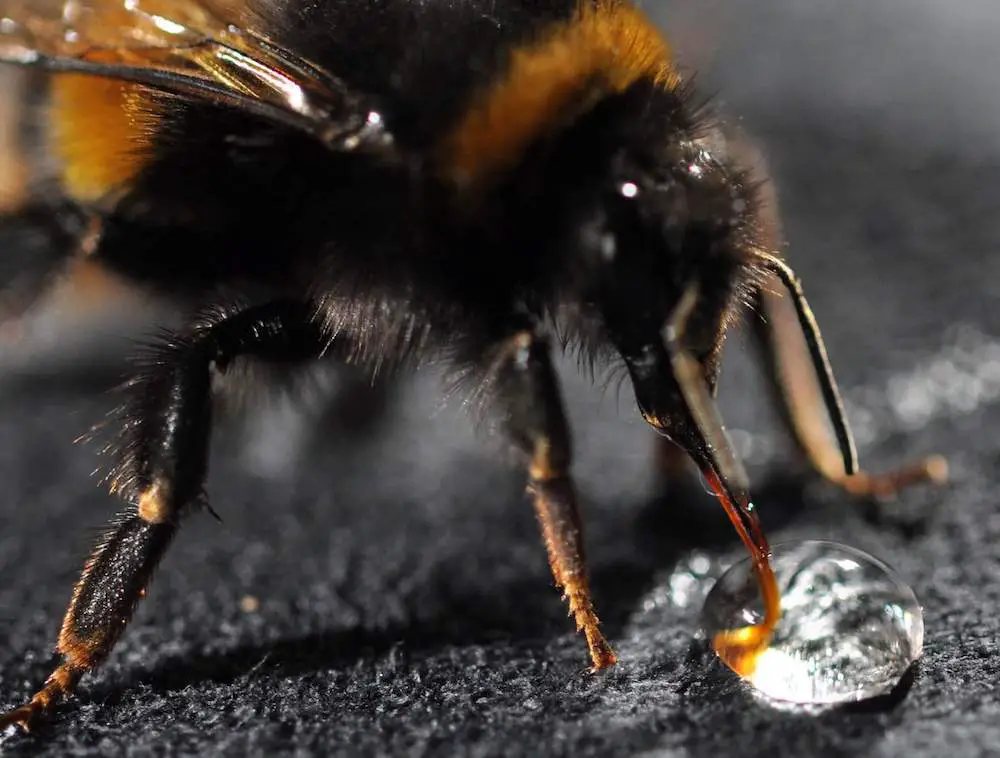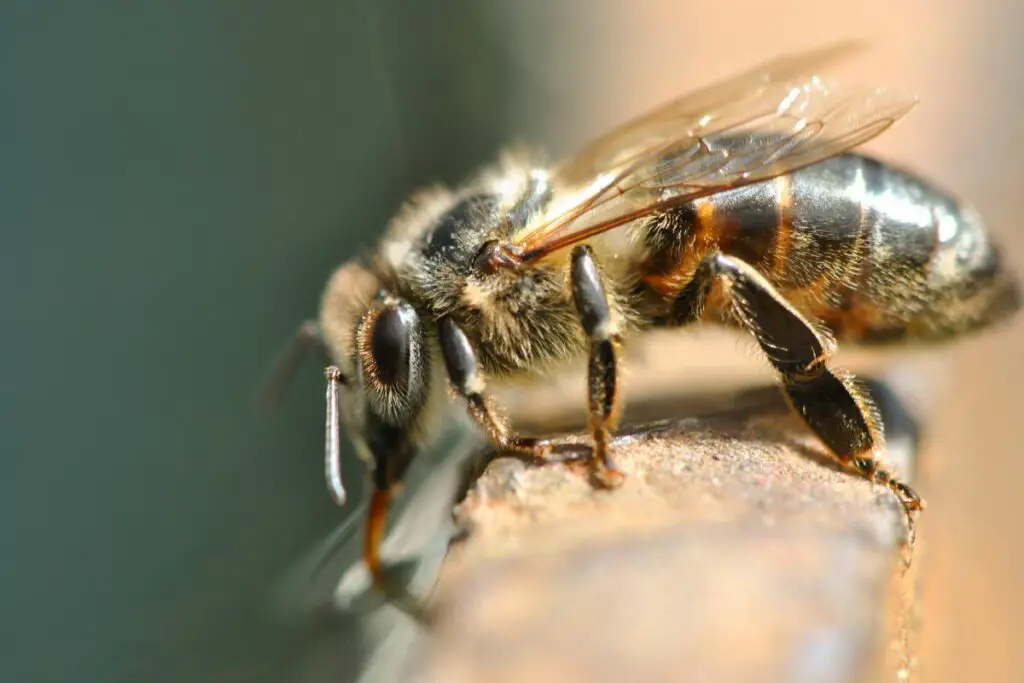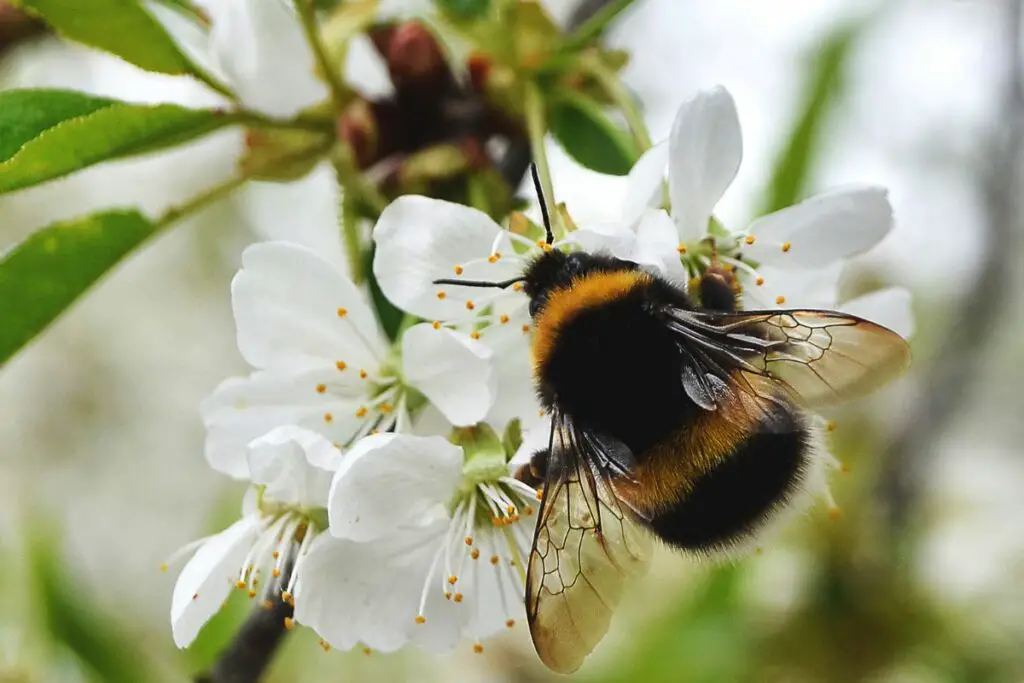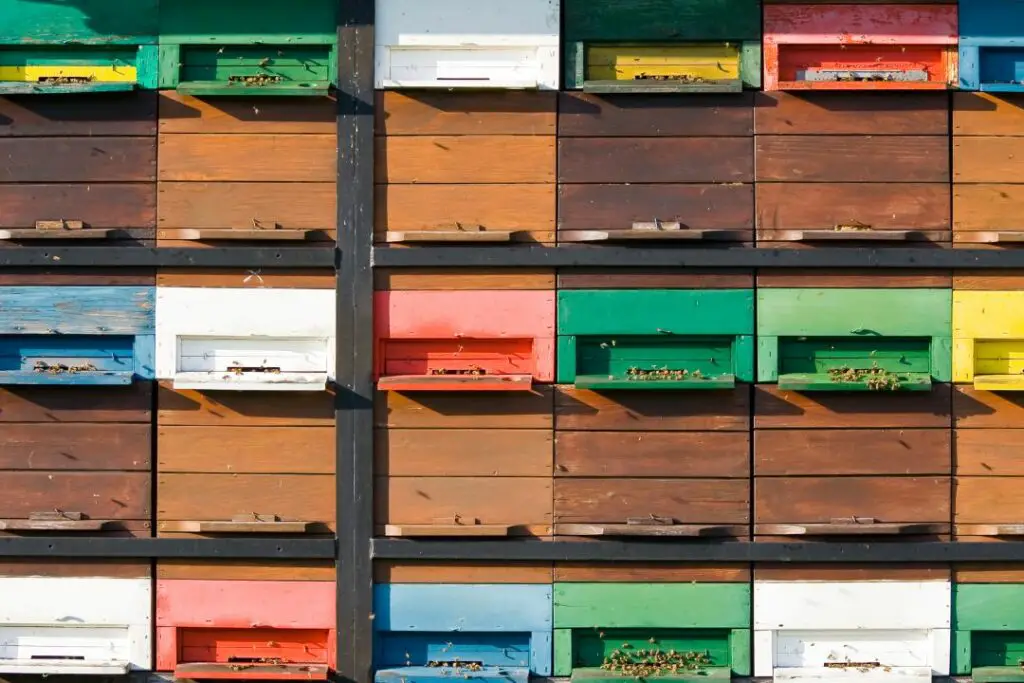Last updated on September 21st, 2023 at 12:16 pm
To revive a tired bee you can simply mix two tablespoons of tap water with a tablespoon of granulated white sugar, place the solution close to the bee using a teaspoon and allow it to drink. Never feed bees honey and don’t try to force the bee to drink.
How To Revive A Tired Bee Back To Life
With the loss of large swathes of natural habitat, bees can find it hard to find pollen and nectar-rich plants in urban settings.
Some bees will leave the hive or nest in search of food, during these trips bees feed on nectar to give them the energy they need to collect pollen.
With that in mind sometimes our little furry friends need a helping hand, so let’s take a look at how you revive a bee with a simple sugar and water solution.
It’s important to remember that sugar water should only be used in emergencies to help a bee return to the hive or nest.
Tap water and granulated sugar have no nutritional benefit for bees, unlike nectar and pollen which provide a range of nutrients that are key to a bee’s growth and development.
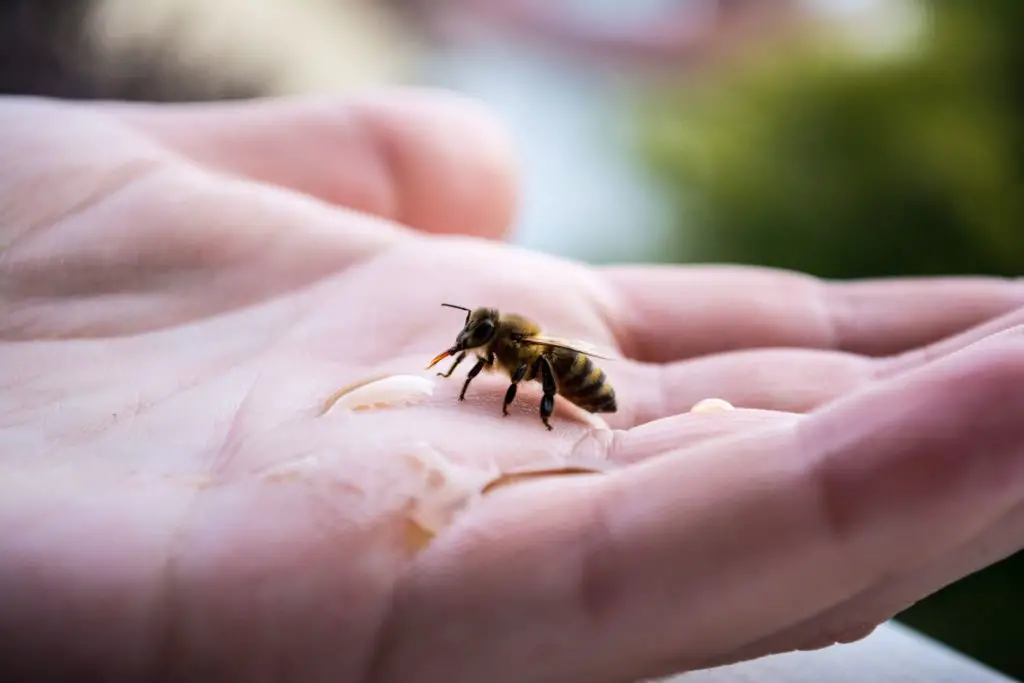
Creating a sugar-water solution for bees
The quickest way to give a tired, drowsy bee the energy boost it needs is by creating a simple mix of sugar and water to create a form of syrup.
Find a suitable container to create your mixture and remember you won’t need very much liquid for a single bee so a small container will be ample.
Mix two tablespoons of tap water with one tablespoon of granulated white sugar until mainly dissolved.
Deposit the solution/syrup on your spoon and place it in close proximity to the tired bee.
It’s really important you don’t force your bee to drink, if it requires an energy boost it will be capable of reaching your liquid of its own accord.
Bees are equipped with a long proboscis capable of extending to suck up any nearby sugar water.
Some sources seem to recommend adding twice the amount of sugar to water but this is not necessary and will not dissolve properly.
*It can be quite hard to dissolve all the sugar in the water so don’t worry if some granules still remain after mixing.
Use your bee revival kit
A bee revival kit helps you to revive a bee when you’re out on your adventures.
It’s a small capsule that sits neatly on your keys and contains a special syrup specifically designed for bee nutrition.
You just unscrew the vial inside your bee revival kit and place it close to your tired bee in exactly the same way you would with a sugar and water mix as detailed above.
Make sure you’re always ready to save a bee and grab your bee revival kit today.
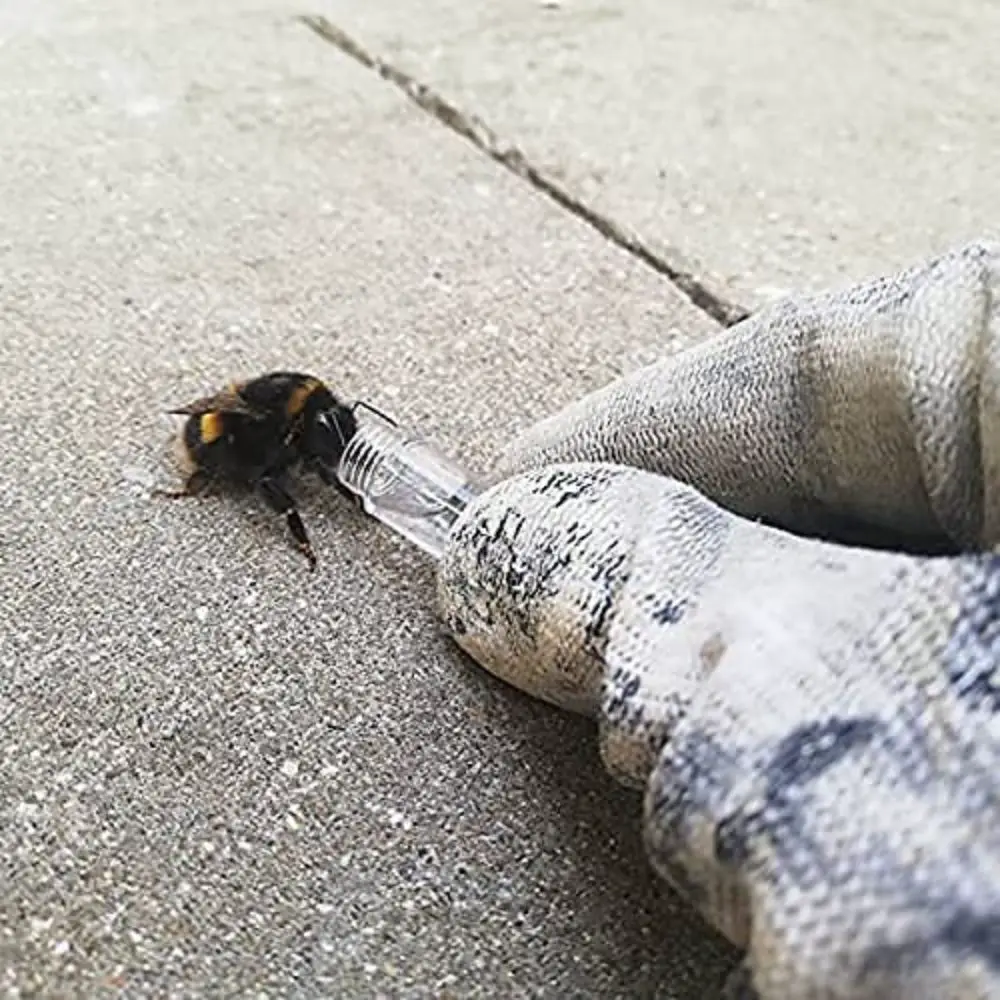
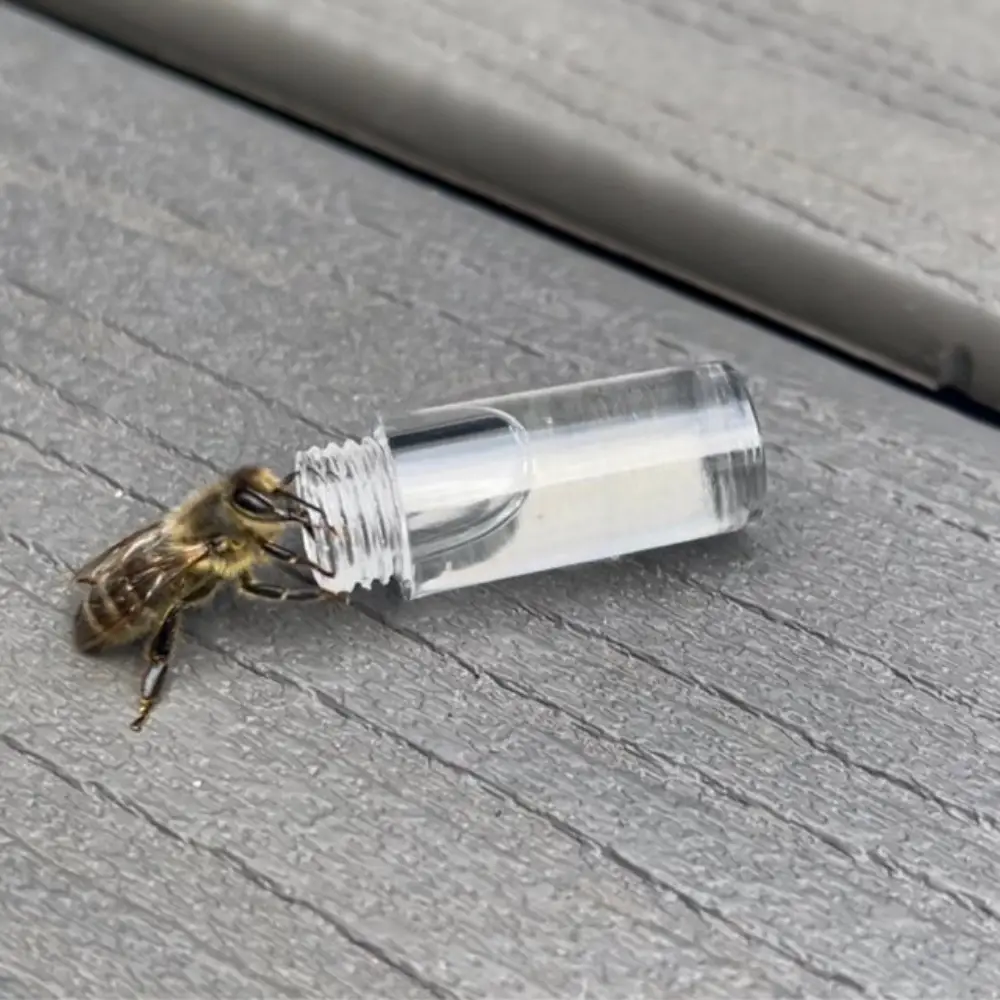
Can you revive a bee with honey?
No, you should never attempt to feed bees with honey.
Large amounts of the honey we consume are imported from other countries and produced by the bees in those countries.
While this isn’t a problem for humans, ingesting honey not local to a bee’s nest or hive can transfer deadly diseases and infections that could lead to colony collapse disorder.
American Foul Brood disease often referred to as (AFD) is spread by the spores within honey, a single bee exposed to these spores can return and infect the entire colony.
When To Revive A Bee
Knowing when a bee needs help or is simply resting is critical, trying to feed a resting bee sugar water will simply distress it.
Bumblebee queens have been observed to rest for between 30 and 45 minutes before taking flight.
Think of yourself as a bee guardian, you are simply there to help in an emergency rather than on a daily basis.
The most obvious indicator that your bee needs your help is a lack of suitable flowers.
Large urban areas are normally the most common locations to find bees in need of a little energy boost.
Gathering resources is exhausting for bees and believe it or not the larger bumblebees are only 43 minutes away from starvation at any time due to the massive amount of calories burned to keep them buzzing in the air.
How To Save A Dying Bee?
Unfortunately saving a dying bee is impossible, once a bee has reached the end of its lifespan there isn’t anything you can do to help.
Western honeybees only live for between 30-60 days and bumblebees even less at approximately 28 days.
Due to their relatively short life cycles, the chances of finding a bee in the end stages of life are very high.
How Do You Know If A Bee Needs Saving?
It’s hard to know if a bee is dying or simply tired.
Dying bees often show characteristics associated with sleepiness like clinging to flower and plant stems and acting in a lethargic manner.
Any bees that show little to no movement in close proximity to their nest or hive are probably coming to the end of their lifecycle and are best left alone.
Guard bees tasked with protecting the other inhabitants will often eject unhealthy bees from the nest to avoid any health repercussions to the colony as a whole.
Reviving a bee with a potential disease or infection could actually be detrimental, so as a rule, you should never help bees close to their nest or hive.
If you find a bee in an environment rich in nectar but it still appears docile this is likely due to old age and the best thing you can do is simply leave it be.
Find out more about how to tell if a bee is dying or tired and what to do in our short guide.
Why Bees Need Our Help
Bees are responsible for pollinating 70% of our wild plants and approximately 80% of pollination worldwide.
Throughout the United Kingdom, there are a whopping 25 species of bumblebee, 260 species of solitary bee, and 1 honey bee species, all vital to pollinating our plants and food crops.
Here are just some of the food crops we enjoy every day that would disappear nearly instantly if bees didn’t pollinate them:
- Strawberries
- Apricots
- Beans and Pulses
- Pears
- Courgettes
- Plums
- Apples
- Nut species including Almonds
This is only a small range of the fruits, vegetables and nuts that bees are responsible for pollinating.
This also extends to a range of crops produced for animal feed which if unavailable would severely affect the world’s meat and dairy industries.
As cities expand and take up more green space we are slowly reducing the number of resources available to bees.
Plants rich in pollen and nectar are being replaced as we sacrifice green space for further urban development.
Pollution, habitat loss and the implementation of neonicotinoid pesticides have all led to a decline in bee populations critical to our survival as a whole.
This leads us perfectly to the next point we want to mention.
Flower First Policy
The best way to help bees as a whole has been and always will be to plant more flowers rich in nectar and pollen, particularly in urban areas.
This can take the form of creating a wildflower area in your garden, planting more bee-friendly flowers or even helping a local organisation develop wildlife areas around your local community.
You can check out the RHS Plants for Pollinators guide to learn more about the best plant species for bees and pollinators.
Frequently Asked Questions
We’ve created a list of some of the most frequently asked questions about how to revive a bee.
Can I leave sugar water out for bees all the time?
No, sugar water is only for emergencies and you should never leave a sugar-water solution/syrup out for bees.
Bees will opt to gather the easily accessible liquid instead of the nectar and pollen required for their continued survival.
How long will it take before my bee is revived?
This will vary from bee to bee but 5-10 minutes will normally be enough time for your bee to gather energy from your sugar water.
What should I feed a tired bumblebee?
You can revive a tired bumblebee exactly as detailed in this guide, just remember bumblebees are a much larger species and may need more syrup to replenish their energy.
How to save a drowning bee?
Saving a wet drowning bee is a bit different than saving a tired bee, check out our guide on how to save a drowning bee to learn more.
Is sugar water bad for bees?
Sugar water is great for helping tired bees in an emergency.
If too many bees in a colony consume sugar water you can run the risk of the sugar granulating back at the hive or nest which can cause problems for the other inhabitants.

